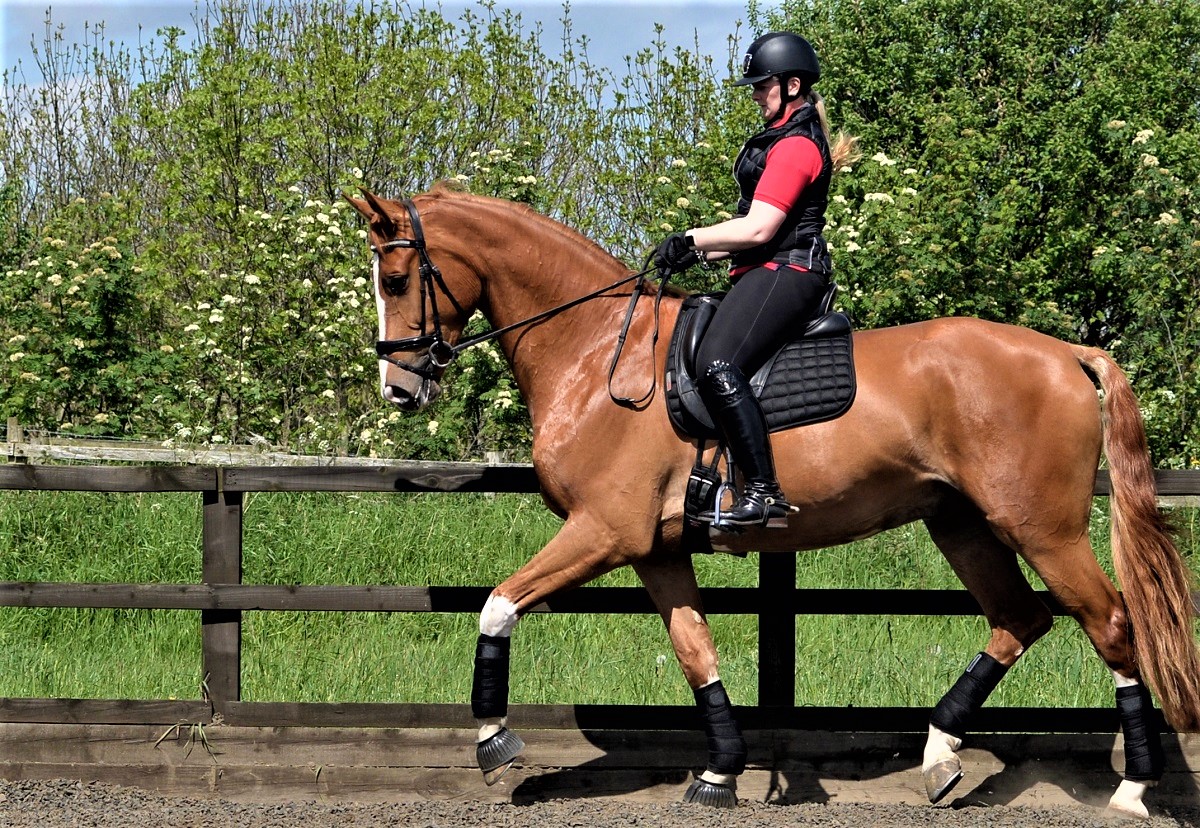
Wow, there can be no doubt that the summer of 2018 has been a hot one, with some areas across the UK seeing no rain fall for up to 55 days and with the highest recorded temperature (according to the Met office) peaking so far to 38.5 degrees. Following on from our recent blog about travelling in the heat we’re going to focus on the problem at the forefront of every horse owners mind – how to deal with the hard ground. Equine expert Sandie Chambers gives us her thoughts below:
How will hard ground affect my horse?
Because of the hot, dry weather the ground is now extremely firm, creating hard surfaces that can result in abnormal equine motion and stress that may result in injury.
The equine distal limb plays a significant role in adaptation to footing and shock absorption during motion, many problems especially in the forelimbs can be attributed to hard ground. This is not only because the forelimbs bear most of the horse’s weight while the back legs do most of the work in propelling the horse forward, but, because the ground is hard the horse needs to adjust their support to help stabilise the lower limb and help reduce concussion and jarring. During training, competition and even turn out, demands increase as the horse needs to adjust its loading, extension, flexion and lateral motion to adapt to the hard earth beneath its feet.
Structures and their vulnerability to hard ground.
The structure of the distal limb is such that there is always potential for injury, made up of predominantly tendon, ligament, bone and neurovascular structures these require careful monitoring and observation especially when working and competing on revolving surfaces or while simply being turned out on hard ground.
The horse’s joints such as the pastern joints, coffin joints and fetlock joints are all vulnerable as surface interactions between the horse’s foot and the hard ground come into play and the natural shock absorbers are compromised resulting in possible chronic repetitive trauma which is thought to be a massive factor in distal limb injury during the summer months.
While it is difficult to completely avoid wear and tear on these structures under these conditions there are ways we can help to decrease the potential for injury.
Summer turnout
Preparing your horse for the field turn out should be a priority while the ground is consistently hard. As some of our horses love to whoop and holler around, there is very little you can do to control their exuberance and here the joints are at their most vulnerable.
Boots or bandages can help provide a stabilising factor to support the joints and their associated collateral ligamentous structures. Boots can help to reduce the potential for increased side to side movements in pastern joints as the concussion increases and the horse attempts to adjust his going.
When your horse becomes more unstable on hard ground, boots will provide an excellent barrier between their vulnerable structures and the environment. When horses trip and fall on hard ground the potential for overreach injuries, grazes, surface cuts and deep penetrating injuries is increased.
Limit the time the horses are turned out on hard ground and on return to their yard cold hose the limbs for 20 minutes to reduce any inflammation associated with the distal sesamoidean ligaments and the flexor tendons which attach along the palmar aspect of the pastern and foot and provide support as these structures are increasingly vulnerable under hard ground conditions.
If you see a change in structure or gait, don’t hesitate to call you vet.
Stabling a horse in the heat
We are hearing how some of you are choosing to stable your horse for longer periods during this hot weather. Watch out for limbs filling up due to an abnormal accumulation of fluid called oedema. This occurs when horses are stood for prolonged periods of time. If this happens and the swelling is cold and not hot, then stable bandages can be applied to help to prevent swelling from happening. The Protechmasta bandages can be used in this instance to help oxygenation and increase circulation while stood in their boxes. The FAR Infrared stimulates the endothelium and enhances local circulation, which in turn helps to reduce swellings and allows in more white blood cells.
Training and competing in the heat
It is common place for horse to wear bandages during warm up and boots for protection while out competing. The main reasons for this are protection against obstacles and warming up tendons and ligaments to improve circulation and oxygenation. Boot and bandages should not be withdrawn because of the hot weather. Introducing the Protechmasta bandages during warm up will reduce the need for a long warm up in the hot weather. The Far infrared properties of Protechmasta stimulate the cells of blood vessels and improve circulation in the hot weather, therefore reducing the potential for accidental injuries, caused by heat induced exhaustion or lethargy.
How to cool horse’s legs down in the hot weather
Cooling limbs post exercise is a necessity to the health of the tendons. Only once cooling has been achieved you can apply a boot or bandage to the limbs. Applying the lightweight Protechmasta leg wraps will help to improve the function of the blood vessels, therefore improving circulation and recovery which reduces the potential for swelling.
